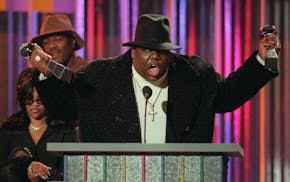Hennepin Avenue, near the Mississippi River.
The Great Northern Depot stood at the edge of downtown by the river, in the Bridge Square area. Judging from the postcard, it was a fine place for motorists to drive around aimlessly with no regard to traffic lanes or other cars.
They called it the Union Depot, out of habit. Since the 1880s, the old Union Depot had stood across the street, fed by the Stone Arch Bridge, but it was old and gloomy to modern eyes by the time the second decade of the 20th century began. The old depot was razed, and the new classical temple was opened for business in 1914.
An ad in the Jan. 22, 1914, Morning Tribune touted the station's improvements: free drinking water from sanitary bubbling fountains, a spacious waiting room "mechanically ventilated by pure, water-washed air," and "noiseless rubber tired electrical motor baggage trucks." In other words, no more horrendous screechy carts. You could have a meal in the dining room, which served "wholesome meals on the popular pay-only-for-what-you-order plan."
Traffic hit a peak during World War II, with 125 trains a day, but the decline of passenger rail meant it would eventually lose its reason to exist. It was demolished in 1978, and the site is now occupied by the Federal Reserve Building. The trains still pass by to the north, but the spurs that sent them into the stolid stone shed are long gone.

ABBA, Blondie, and the Notorious B.I.G. enter the National Recording Registry
West Virginia transgender sports ban discriminates against teen athlete, appeals court says
Dr. Martens shares plunge to record low after weak US revenue outlook
Visa fees for international artists to tour in the US shot up 250% in April. It could be devastating

